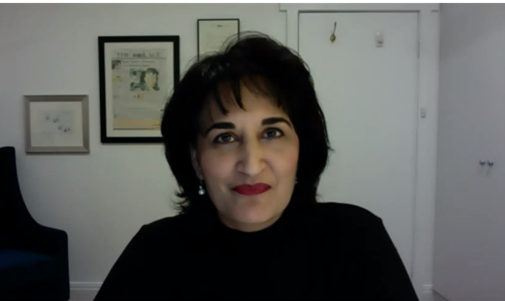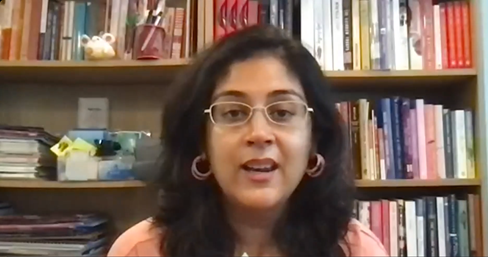Inspiring new generations of Australian South Asian Writers | Event Recap Part 2
In our previous post we shared part 1 of our event recap where three talented writers openly spoke about their professional writing journeys and how they navigated challenges within the industry. They generously shared so much valuable information that we couldn’t fit it into one post, so here’s part 2 of our event recap.
The talented writers we heard from were:
- Sushi Das, RMIT ABC Fact Check’s Chief of Staff, award-winning journalist and author of Deranged Marriage;
- Balli Kaur Jaswal, academic and award-winning, international best-selling author of 4 books including Sugarbread, Erotic Stories for Punjabi Widows; and
- Alicia Vrajlal, Refinery 29 Australia’s Culture Editor, former Editor at HuffPost Australia, Yahoo and Daily Mail. Alicia is the founder of the blog, Draw Your Box, highlighting diversity-related stories in Australia and beyond.



Key panel takeaways:
Reputable literary agents don’t ask for upfront fees
Literary should only receive a commission once your manuscript gets picked up by a publisher. Balli said, “Literary agents pitch your book to editors they think will be a match for you, but you don’t pay anyone to do this. This is important, if anyone tells you, you need to pay to get a literary agent to look at your work or to get published […] it could very likely be a scam.”
You can write honestly without upsetting your family, friends, and community.
Sushi expressed that it’s possible to share personal stories and be brutally honest, based on her own experiences writing Deranged Marriage. She shared that her interviewing practices as a journalist helped her interview the people in her life in a way that allowed her to navigate sharing the truth while being mindful of the other people present in her narrative.
Daizy acknowledged “This may not be possible for everyone, particularly those writing about sensitive subjects, like abuse or being estranged from their families. For this reason, some authors, like Ruhi Lee, write under pen names.”

Advocate for yourself and your work
If a decision is being made doesn’t authentically represent you and your work, speak up. When you’re the only one in the room who understands the cultural implications and context of the decisions being made – share why you disagree. Yes, there’s a power imbalance, but if you’re not happy, the authors urged emerging authors to take action and stand up for what you believe in. Balli shared, “I wish I knew before publishing a book that I had a right to advocate for myself.”
Sushi expressed her disappointment with her book cover, “The publisher presented me with a number of options for the cover. The first one was a drawing of a woman in South Indian dancing gear standing on top of a London black cab, with the cover cut off at the neck. My family comes from north India! I didn’t really like the cover that was picked in the end, but I went along with it for fear of exasperating the publisher. I wish I hadn’t done that. I know you’re not meant to judge a book by the cover, but people do, and that’s a fact. I feel the cover of my book shows literal images of the three cultures that I live within and so lacks a certain sophistication.”

Although Balli’s first experience with a smaller publisher was a positive one, noting, ‘I didn’t have any issues with the covers with them,’ but this changed when they closed down and another publisher acquired Balli’s work. On this experience, Balli said, “Sushi brought up a lot of similar, overlapping experiences to mine … [W]hen Sleepers was bought by a small publisher in Singapore, I nearly withdrew the book from publication altogether. I was told that red and purple are Indian colours, so that’s what should be on the cover.”
Balli also commented on this trend in publishing where South Asian women are portrayed as faceless, headless or missing body parts and were rarely ever depicted as a whole person, “Interestingly, there’s research from 10-15 years ago (so it needs to be updated), but [it showed] … the differences in covers between South Asian men’s books and South Asian women’s books. [The] author [noticed that for South Asian women’s stories] it was always bodies with parts being cut off, like heads and limbs … they were always disembodied, like the women couldn’t be whole; and they were always draped in sarees. Whereas the men’s stories tended to be promoted as more universal, ‘serious’ themes, nor did they overtly signal their Indian-ness as much.”
Daizy agreed with the authors on the importance of covers and getting them right. On Sushi’s story, she said “I think it says so much, and I’ve spoken to a lot of other authors who had to put their foot down about covers too, because it matters. People may or may not buy your book based on the cover.” The strength of your story is in more than just the words being shared in your book, it’s also in how your story finds and reaches audiences, and how it is presented is a big part of that because people really do judge books by their covers.
If you attended the event and would like to share your own reflections and connect with other attendees, use the hashtags #SouthAsianWriters and #SouthAsianHeritageMonth on Instagram and Twitter. This event was also the final event in the Australian Indian Digital Creative Festival.
Missed out on attending this event and want to be kept in the loop? Join ASAC’s mailing list or follow ASAC on Instagram.
Our Event Sponsors
A big thank you to our funding partner Australia India Youth Dialogue and event sponsors:
Our COMMUNITY Partners
Community Partners: The Indian Feminist, Young Sikh Professionals Network, Asian Woman Festival, SPARK Deakin, Bold Punjab and SolveSquad.
Media Partners: South Asian Today, Internash and The Lipstick Politico.



